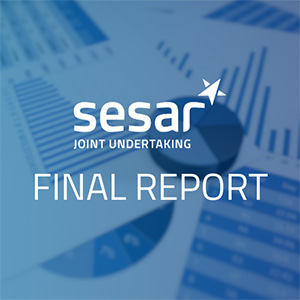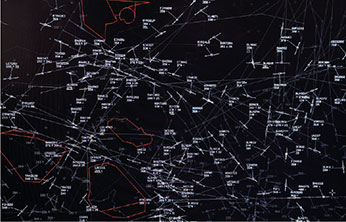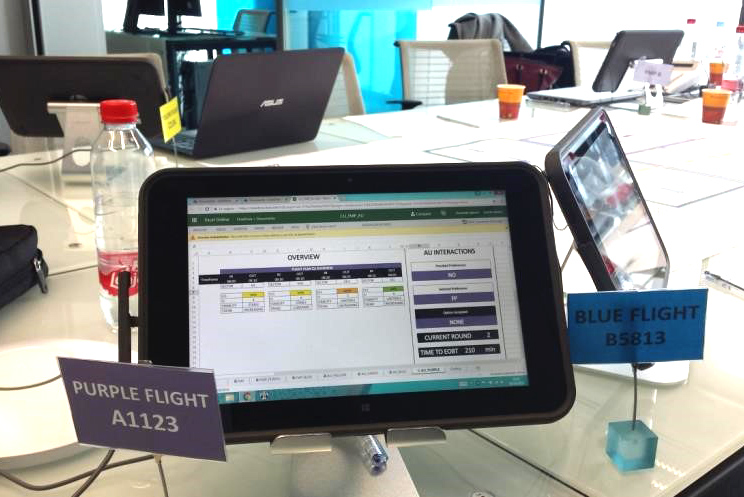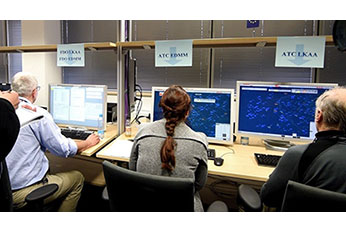The SESAR 2020 Optimised Airspace User Operations Project (OAUO) was defined in the SESAR 2020 Multi Annual Work Programme as PJ07. This industrial research and validation project addresses both civil and military airspace users (AUs), further improving their processes and tools in relation to their interaction with ATM Network Operations, with at its heart an improved Collaborative Decision‑Making (CDM) process that takes into account the evolving business needs of airspace users.
PJ07 was the first SESAR 2020 project to be launched, on 1 October 2016.
In the first wave of SESAR 2020, which will run until the end of 2019, the project will bring the different concepts to a higher level of maturity following the definition and execution of several validation exercises. As from 2019, trials will address collaborative decision‑making (CDM). Shadow-mode trials will also be organised to prepare for the industrialisation and deployment of the project.
Challenges
PJ07 will have to face a number of challenges, given that:
- A better view of actual demand is required at ATM Network level in order to improve the performance of ATM operations in a Trajectory Based environment;
- The decision processes of AUs and the resulting business priorities differ from AU to AU and from flight to flight in a single AU. Currently, the trajectory development and management processes used in ATM do not allow each individual user to incorporate specific aircraft/flight priorities into the requested trajectory and to respect constraints in a way that best meets business priorities;
- Irregular operations impose unplanned/additional costs on airlines and have a huge impact on the annual costs and revenue of airlines. Today, the ATM system allows AUs limited flexibility (e.g. ATFM slot-swapping process). A better recovery process incorporating more flexibility, i.e. the ability of the ATM system to follow the decision processes of AUs and accommodate their changing business priorities, could mitigate such impact considerably. Flexibility and equity in the ATM system are pivotal;
- operational Air Traffic (OAT) flight plans are not harmonised on a European level and information is not disseminated to the Network. This results in a lack of awareness of military traffic intentions that can affect ATM Network performance (including safety), and makes for a lack of flexibility in the definition of cross-border exercises as well as limitations in terms of interoperability.
Deliverables
PJ07 is structured along three solutions started in SESAR 1. SESAR 2020 introduces new concepts and brings the solution to a higher level of maturity through the development of requirements and validation exercises.
The three solutions are:
- Solution one – Airspace User Processes for Trajectory Definition which will develop requirements and validate procedures and workflows for Flight Operations Centres, enabling them to interact better with other ATM stakeholders, especially with the Network Manager, with regard to (medium and short term) trajectory definition. This will also ensure continuity in the CDM process throughout the trajectory lifecycle;
- Solution two - Airspace User Fleet Priorities and Preferences Processes (UDPP) designed to smoothly integrate the priorities and preferences of airspace users via collaborative processes at airports and in Network DCB processes, allowing those processes to perform multi-criteria optimisation tasks involving many stakeholders. This solution will also address how UDPP can be used by airspace users that are not regular users at a given airport;
- Solution three – Mission Trajectory-driven Processes, which has the same major objective as the first solution, but is aimed at Wing Operations Centres, and will focus in its first phase on harmonising military flight plans and integrating military traffic intentions into the overall European ATM network.
Benefits
Most of the benefits of PJ07-OAUO are related to improved efficiency, flexibility and cost-effectiveness for the AUs, which will be translated into potentially substantial cost savings. According to the cost-benefit analysis carried out by the SESAR Joint Undertaking, this will result in potential savings of several hundreds of millions of euros over the next 20 years.






